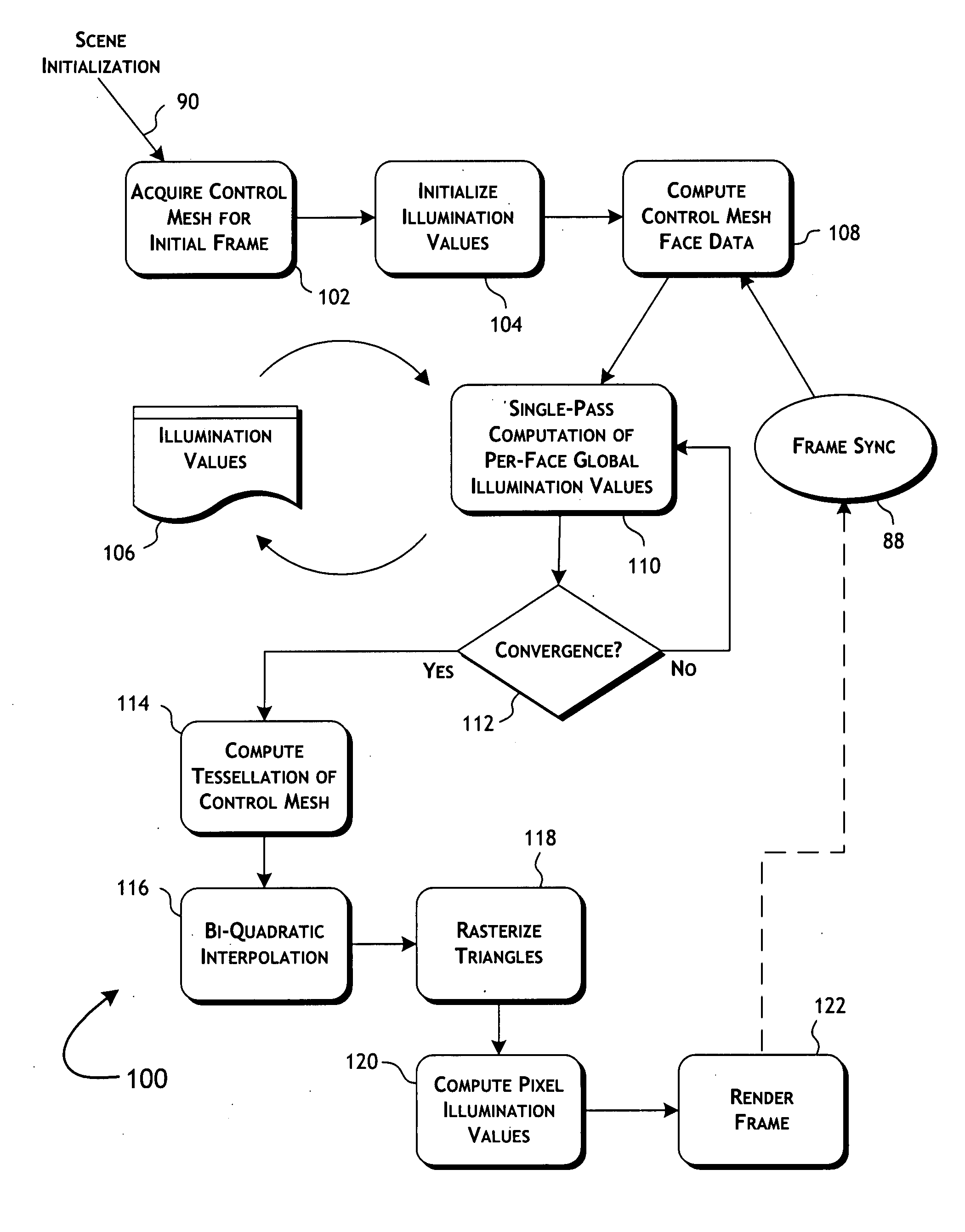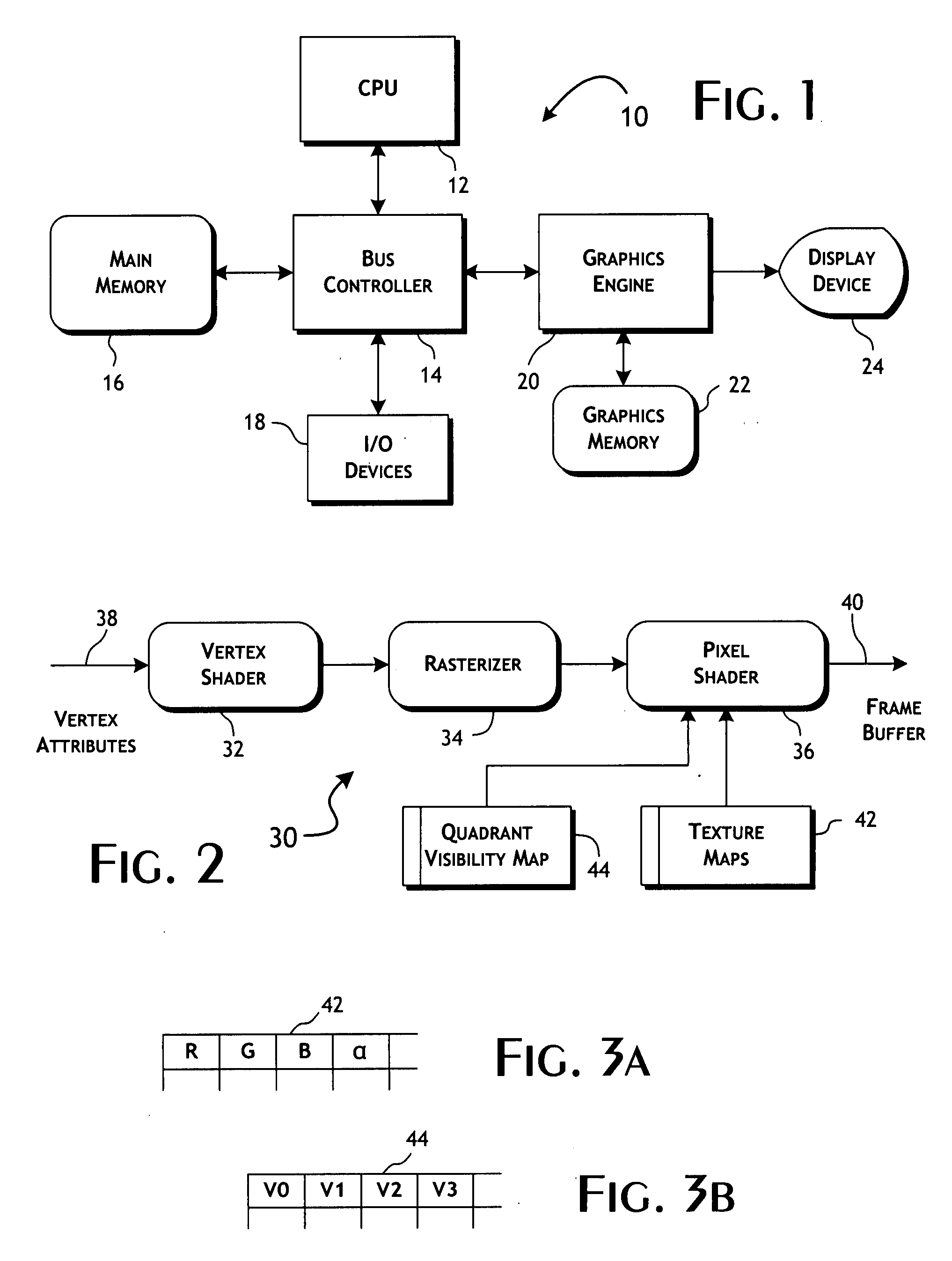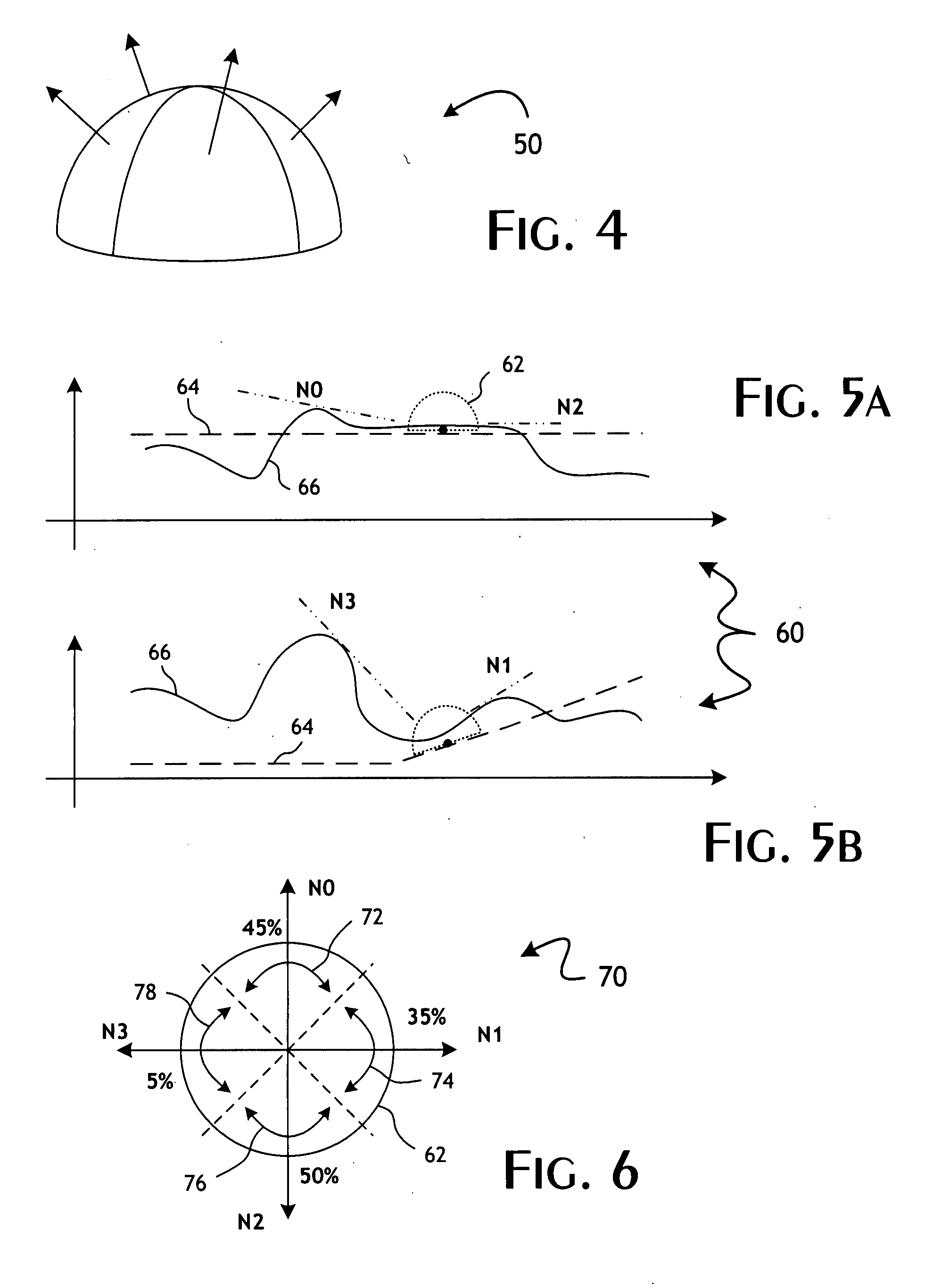System and methods for real-time rendering of deformable geometry with global illumination
a global illumination and deformation geometry technology, applied in the field of computer graphics rendering of dynamic scenes, can solve the problems of reducing simulation accuracy, computational requirements of algorithms implementing simulations of scenes of even modest complexity that well exceed usable display frame-rates, and known physics-based global illumination techniques. achieve the effects of improving computation global illumination, high frame-rate, and fast convergen
- Summary
- Abstract
- Description
- Claims
- Application Information
AI Technical Summary
Benefits of technology
Problems solved by technology
Method used
Image
Examples
Embodiment Construction
[0029]The present invention provides a computer graphics system particularly suited for the real-time rendering of complex deformable geometries subject to global illumination. For purposes of the following discussion, a deformable geometry is understood to encompass an image, or scene, containing multiple graphical elements that, further, may be independently in motion across one or more frames of a real-time progression of the deformable geometry. The qualification of real-time is similarly to be understood as encompassing the rendering of a scene containing significant deformable geometry at frame rates in excess of twenty and, more typically, twenty-five frames per second. Embodiments of the present invention are capable of rendering complex fully deformable animated scenes at sixty frames per second. While high-quality, realistically rendered scenes subject to global illumination can be readily produced using the full complement of techniques encompassed by the present inventio...
PUM
 Login to View More
Login to View More Abstract
Description
Claims
Application Information
 Login to View More
Login to View More - R&D
- Intellectual Property
- Life Sciences
- Materials
- Tech Scout
- Unparalleled Data Quality
- Higher Quality Content
- 60% Fewer Hallucinations
Browse by: Latest US Patents, China's latest patents, Technical Efficacy Thesaurus, Application Domain, Technology Topic, Popular Technical Reports.
© 2025 PatSnap. All rights reserved.Legal|Privacy policy|Modern Slavery Act Transparency Statement|Sitemap|About US| Contact US: help@patsnap.com



